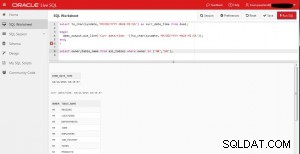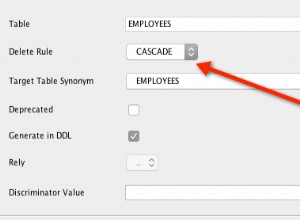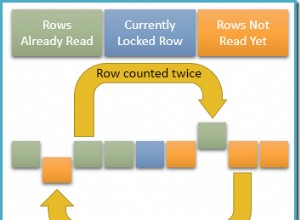Aktualisierung vom 5. Dezember 2011
Dank Brad Robertson und seinem Team gibt es das Apartment-Juwel . Es ist sehr nützlich und erledigt einen Großteil der schweren Arbeit.
Wenn Sie jedoch an Schemas basteln, empfehle ich dringend, zu wissen, wie es tatsächlich funktioniert. Machen Sie sich mit Jerod Santos Walkthrough vertraut , damit Sie wissen, was das Apartment-Juwel mehr oder weniger tut.
Aktualisierung 20. August 2011 11:23 GMT+8
Jemand hat einen Blogbeitrag
Aktualisierung 11. Mai 2010 11:26 GMT+8
Seit gestern Abend konnte ich eine Methode zum Laufen bringen, die ein neues Schema erstellt und schema.rb hineinlädt. Ich bin mir nicht sicher, ob das, was ich mache, richtig ist (scheint bisher gut zu funktionieren), aber es ist zumindest einen Schritt näher. Wenn es einen besseren Weg gibt, lassen Sie es mich bitte wissen.
module SchemaUtils
def self.add_schema_to_path(schema)
conn = ActiveRecord::Base.connection
conn.execute "SET search_path TO #{schema}, #{conn.schema_search_path}"
end
def self.reset_search_path
conn = ActiveRecord::Base.connection
conn.execute "SET search_path TO #{conn.schema_search_path}"
end
def self.create_and_migrate_schema(schema_name)
conn = ActiveRecord::Base.connection
schemas = conn.select_values("select * from pg_namespace where nspname != 'information_schema' AND nspname NOT LIKE 'pg%'")
if schemas.include?(schema_name)
tables = conn.tables
Rails.logger.info "#{schema_name} exists already with these tables #{tables.inspect}"
else
Rails.logger.info "About to create #{schema_name}"
conn.execute "create schema #{schema_name}"
end
# Save the old search path so we can set it back at the end of this method
old_search_path = conn.schema_search_path
# Tried to set the search path like in the methods above (from Guy Naor)
# [METHOD 1]: conn.execute "SET search_path TO #{schema_name}"
# But the connection itself seems to remember the old search path.
# When Rails executes a schema it first asks if the table it will load in already exists and if :force => true.
# If both true, it will drop the table and then load it.
# The problem is that in the METHOD 1 way of setting things, ActiveRecord::Base.connection.schema_search_path still returns $user,public.
# That means that when Rails tries to load the schema, and asks if the tables exist, it searches for these tables in the public schema.
# See line 655 in Rails 2.3.5 activerecord/lib/active_record/connection_adapters/postgresql_adapter.rb
# That's why I kept running into this error of the table existing when it didn't (in the newly created schema).
# If used this way [METHOD 2], it works. ActiveRecord::Base.connection.schema_search_path returns the string we pass it.
conn.schema_search_path = schema_name
# Directly from databases.rake.
# In Rails 2.3.5 databases.rake can be found in railties/lib/tasks/databases.rake
file = "#{Rails.root}/db/schema.rb"
if File.exists?(file)
Rails.logger.info "About to load the schema #{file}"
load(file)
else
abort %{#{file} doesn't exist yet. It's possible that you just ran a migration!}
end
Rails.logger.info "About to set search path back to #{old_search_path}."
conn.schema_search_path = old_search_path
end
end




